Coronavirus No Match for H-2A Demand
TOPICS
Labor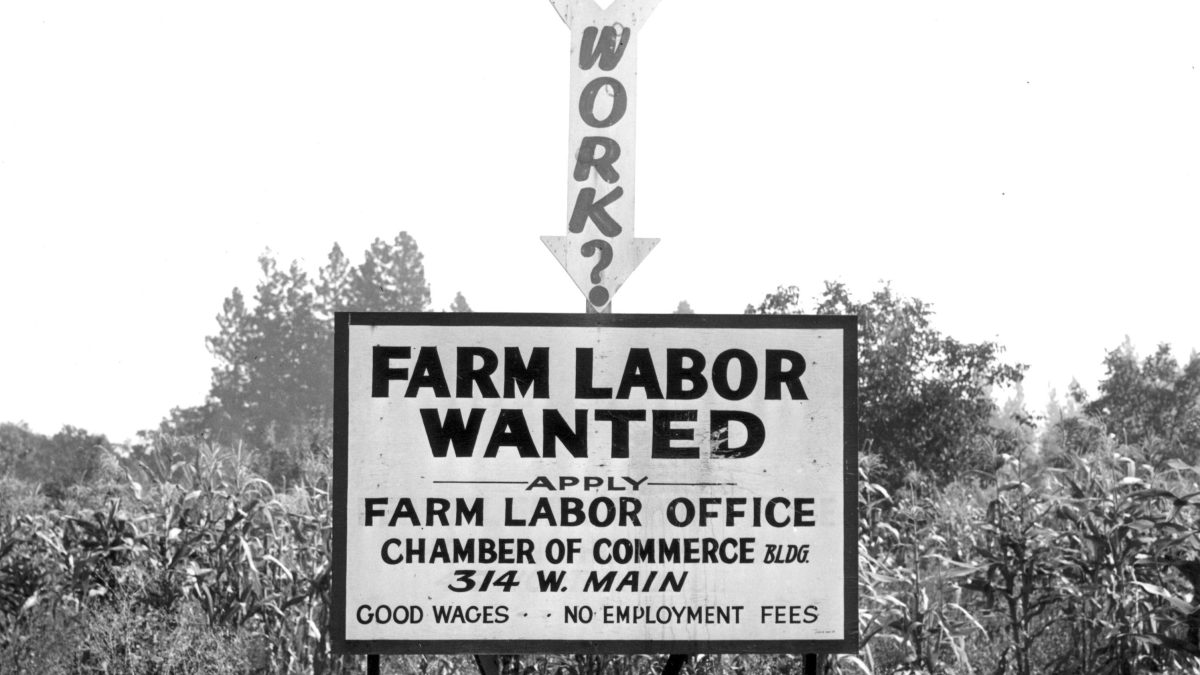
photo credit: OSU Special Collections & Archives/Commons
Veronica Nigh
Former AFBF Economist
When the U.S. government announced its decision to suspend visa processing in Mexico starting March 18 to combat the spread of the coronavirus, growers around the country immediately expressed concerns that the action could have a major impact on agriculture and our food supply down the road. The concern, of course, was due to the vital role that H-2A workers play in U.S. agriculture, especially in the fruit and vegetable sectors. While U.S. growers recruit skilled agricultural workers from around the world, more than 90% of H-2A workers come from Mexico, so worries that workers from Mexico would not be admitted were especially acute. In response to these concerns, the administration provided several flexibilities to the H-2A program, which largely allowed it to continue without significant disruption. Understandably, however, these flexibilities were not instantaneous, resulting in some delays. There has been a lot of interest as to whether the uncertainties and delays would have a negative impact on the number of H-2A applications or the number of H-2A positions certified in the third quarter (the H-2A program operates on a fiscal year basis), covering the time frame of 1 April 2020 – 30 June 2020. New data, out from DOL this week, answers those questions with a resounding no.
Despite the challenges of the coronavirus, farmers and ranchers continued to demand H-2A workers in record numbers in the third quarter. The number of certified positions during the third quarter of 2020 was up 4% compared to the third quarter of 2019. This was a larger increase than the 2% growth experienced between the third quarter of 2018 and the third quarter of 2019.
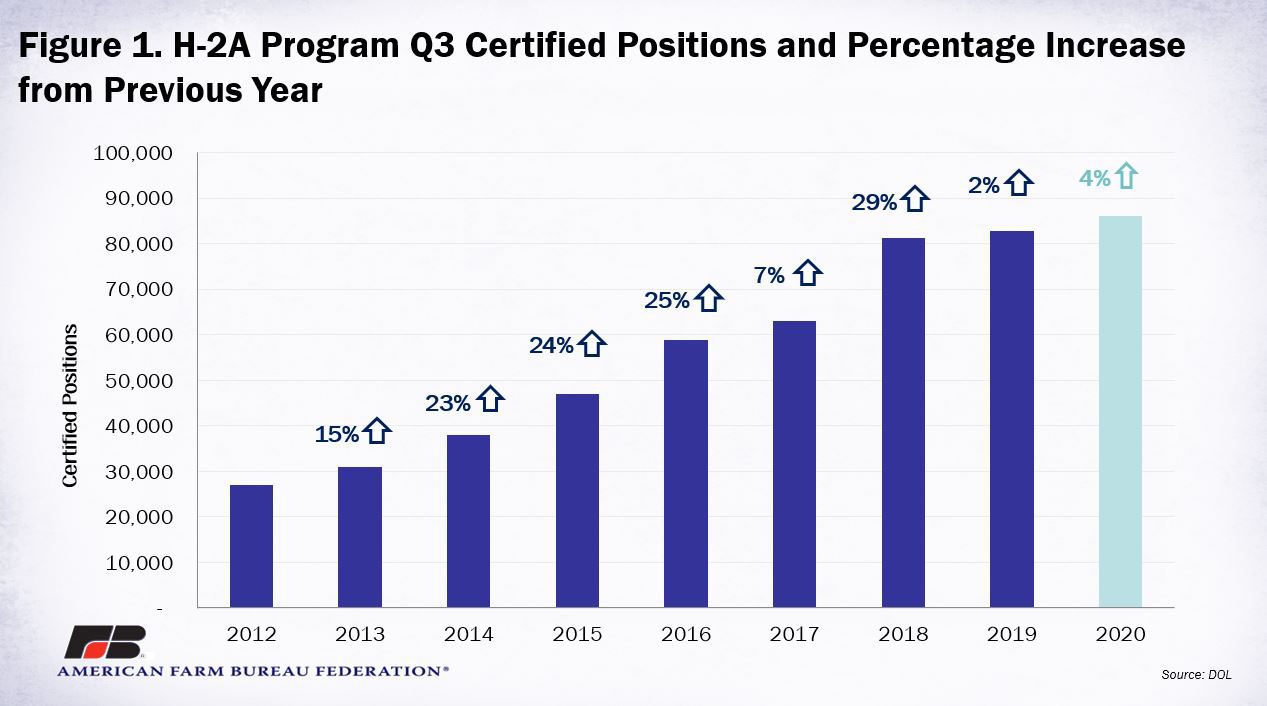
During the third quarter of 2019, DOL also received the largest-ever number of applications during the third quarter – 3,098. This represented an increase of 5% compared to the third quarter of 2019. The growth rates seen in the third quarter of 2019 and 2020 are considerably slower than what was seen in previous years. However, it is worth noting that 2019 weather made for a challenging growing year for many states across the Southeast and 2020 was obviously affected by the coronavirus. Perhaps, Q3 2021 will see a return to double-digit growth of the previous years.
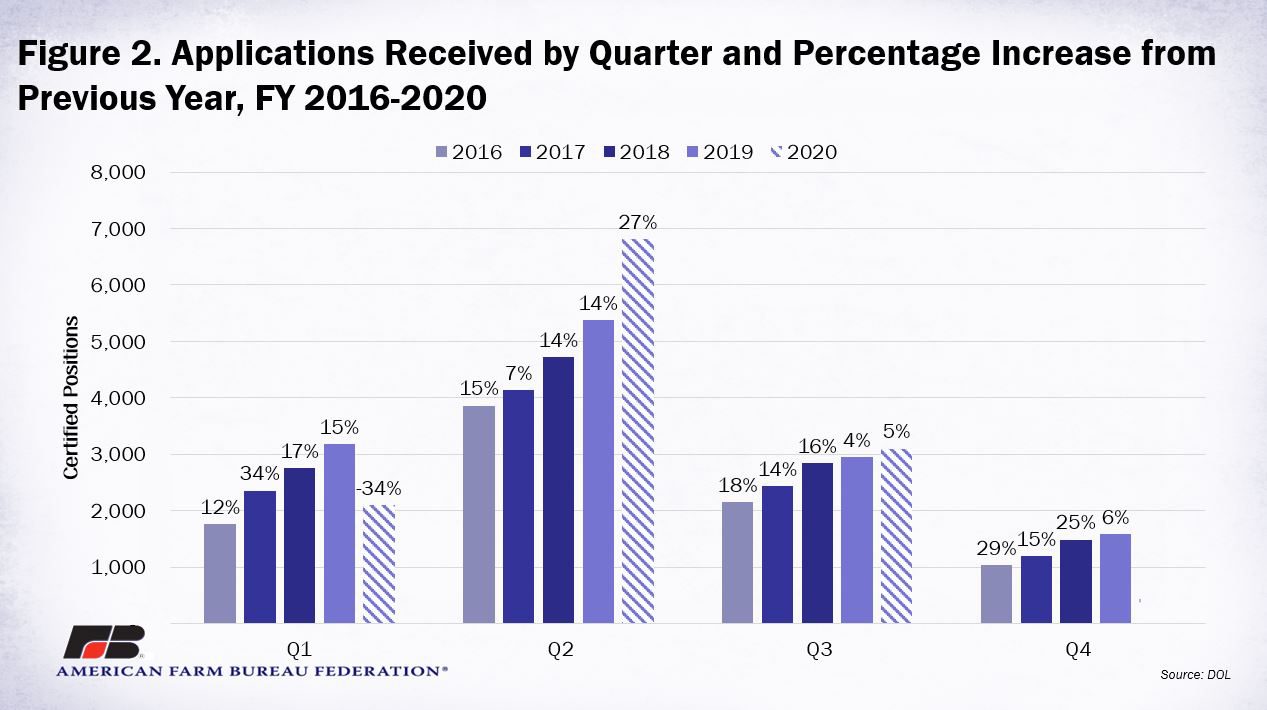
With the data on certified positions, DOL’s latest report provided some good news related to application processing time, despite the challenges of the coronavirus. In the third quarter of 2020, 96% of applications were processed in a “timely” manner, which, according to DOL, occurs when a complete H-2A application is resolved 30 days before the start date of need. This is a marked improvement over the third quarter of 2019 when 86% of applications were processed in a timely manner.
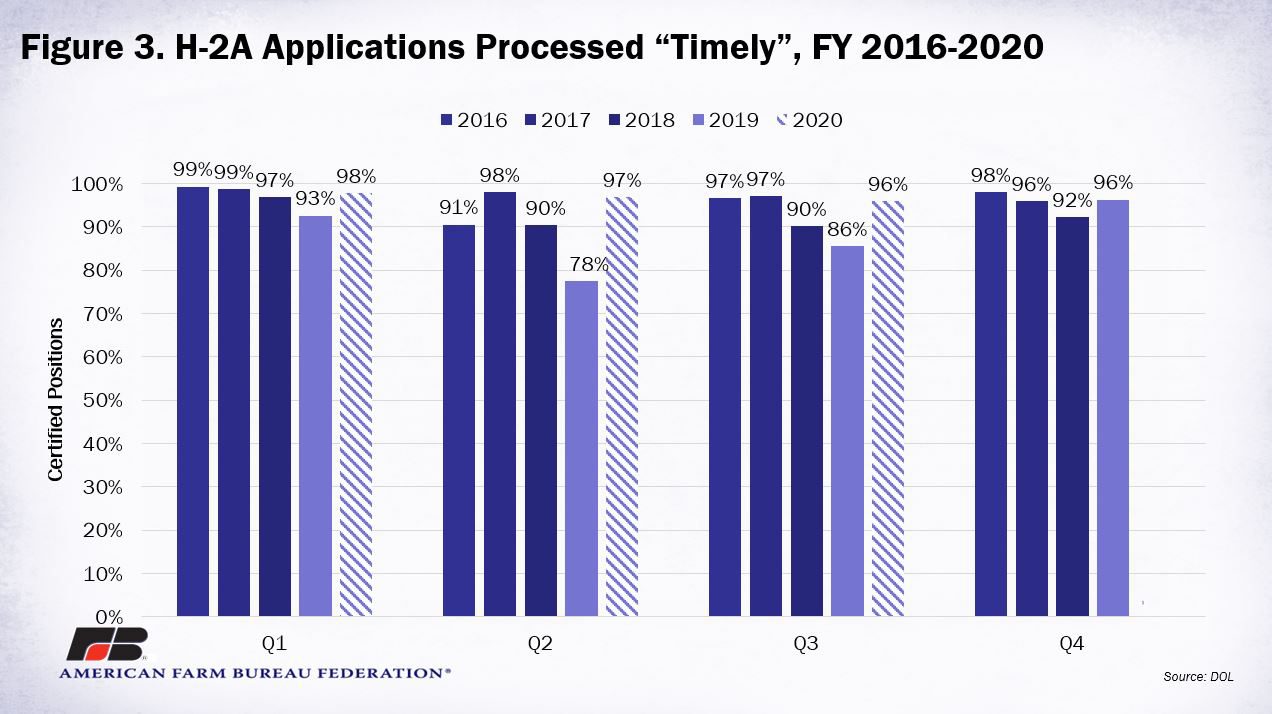
Eight of the top 10 states for H-2A program usage during the first three-quarters of the year have been the same over the last three years. Despite remaining in the top 10, three of the top 10 states, Georgia, Louisiana and Kentucky, requested fewer certified positions in the third quarter of 2020 than in the third quarter of 2019. Meanwhile, other program power users like Florida, Washington, California and North Carolina continued to post strong quarter-over-quarter growth, as illustrated in Figure 4. South Carolina dropped out of the top 10 for the first time in five years and was replaced by Texas.
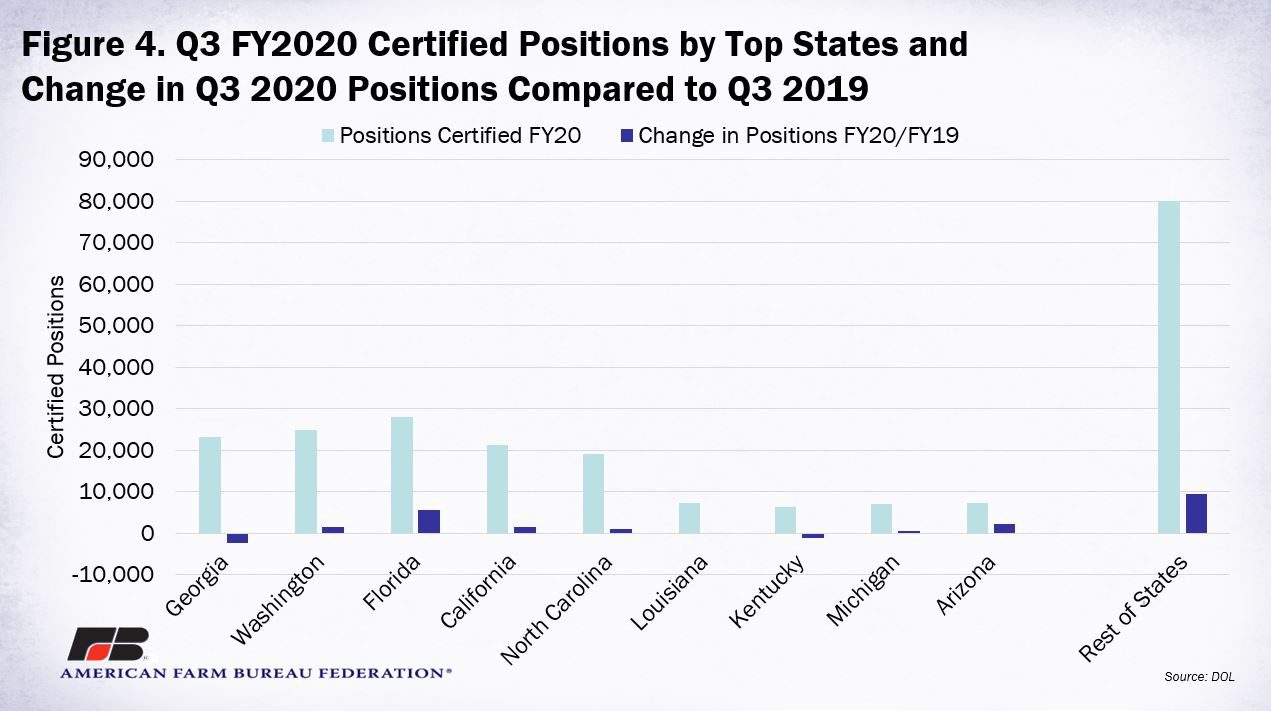
Summary
The coronavirus certainly had the potential to completely upend the H-2A program. However, as a result of outreach by growers, grower organizations and elected officials, important flexibilities were quickly provided for the program. These flexibilities ensured that the program continued to play a vital role in U.S. agriculture, setting new records for third-quarter use.
Trending Topics
VIEW ALL